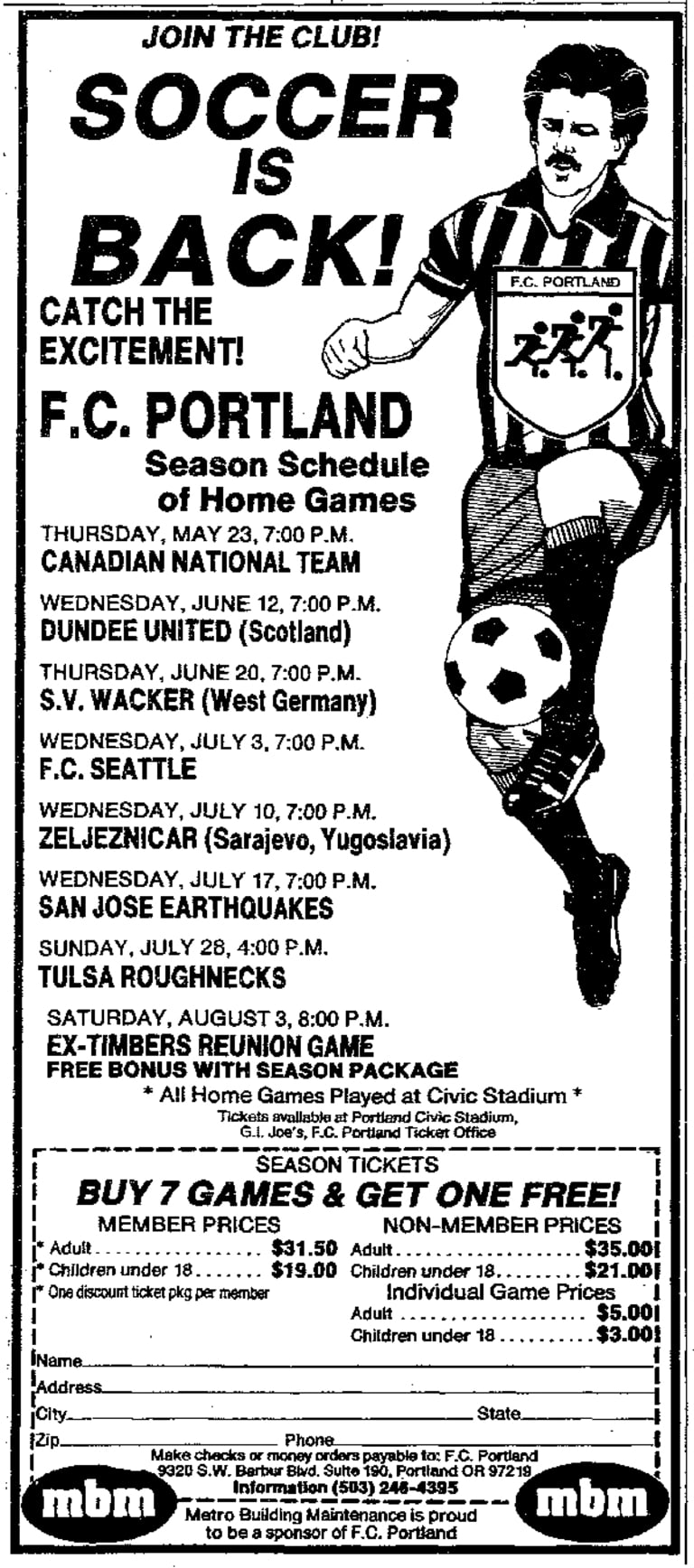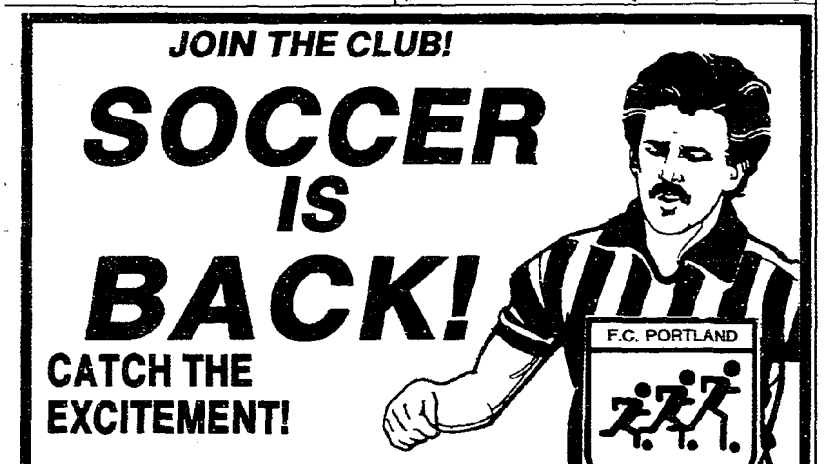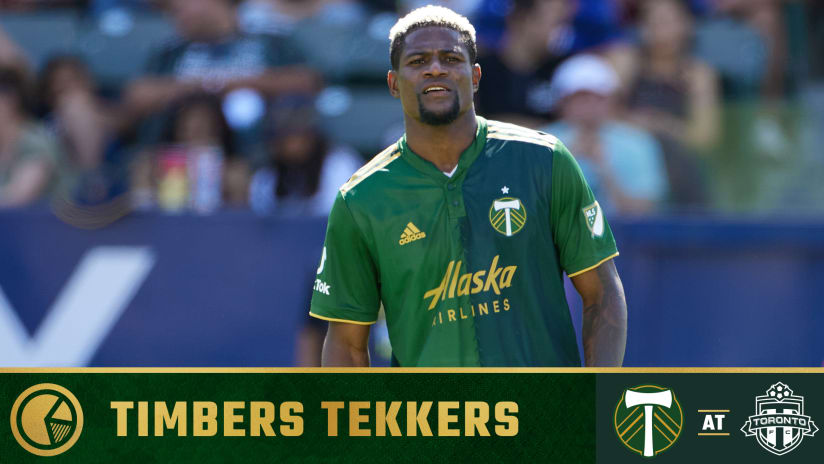Editor’s Note: This October 9, it will mark 90 years since the venerable Providence Park hosted its first-ever event: a football game between the University of Oregon and Oregon State. Designed by A.E. Doyle—a ubiquitous Portland architect for his era who designed the downtown Multnomah County Library, the Meier & Frank Building (now The Nines Hotel) and much of Reed College, among others—Multnomah Stadium, as it was first called, was built as part of the neighboring Multnomah Athletic Club in 1926.
Before becoming an American soccer mecca, the stadium hosted countless sports and non-sporting events as well as undergoing a few name changes from Multnomah Stadium to Civic Stadium to PGE Park to JELD-WEN Field and finally to the current Providence Park. From ski jumping to greyhound racing to major college football, the stadium has become an icon in the Rose City.
While soccer has emerged as its main event with the dawn of a new century, the beautiful game has made a home at the stadium throughout its 90-year history. Timbers.com has been examining the different soccer eras at Providence Park with this fourth chapter looking at the era between the end of the NASL and the dawn of a new millennium. The majority of the information was gathered using and cross-referencing the Oregonian’s archives.
After the NASL-version of the Portland Timbers folded in 1982, the future of soccer in Soccer City, USA appeared somewhat uncertain, but fortunately for Portland, soccer did find a way to survive.

In 1985, businessman Art Dixon put together a team of amateur players to compete in a series of international friendlies and regional games. The team, called FC Portland played against semi-pro sides like the San Jose Earthquakes and Victoria Riptide. The team was coached by former NASL Timbers player and influential soccer pioneer Clive Charles. Charles led a squad that put together a series of stunning results for the all-amateur side.
“This is perfect for me. I wanted to play but I had nowhere else to go. When I heard about this team, I was really excited.”
—University of Portland player Mark Miller on joining FC Portland.
The Oregonian, 1985
Less than a month after the club was announced, the team took on FC Seattle in a doubleheader that also featured the U.S. Men’s National Team taking on Canada. An announced attendance of 4,181 saw the USMNT play in Oregon for the first time. The moment triggered a a rebirth of club soccer on Morrison Street. The local fans were sent home happy when the Charles-led squad defeated their Northern rivals thanks to a brace by University of Portland player Mark Miller.
“I saw an enthusiastic crowd, I saw talented players, and I’ll tell you what I saw that I liked most: I saw a sign that said ‘soccer is back.’ It will be back.”
—U.S. National Men’s Team Coach Alkis Panigoulias
The Oregonian, 1985
With a successful start to the season, FC Portland went on to play four international friendlies at the stadium, competing against Dundee FC of Scotland, S.V. Wacker of West Germany and twice against the Canadian National team. Shockingly, the group of mostly UP and Warner Pacific players went toe-to-toe with their professional counterparts going 1-1-2 in their four friendlies.
In the first meeting against Canada, the local club steamrolled the national team when Warner Pacific sophomore Brent Goulet scored a goal to lead FC Portland to a 3-1 victory. Goulet would go on to win league MVP honors in 1987 and would become the first American to ever be granted a UK work permit to play professionally in England when he signed with Bournemouth in 1988.
“Portland has some very good players, especially that No. 9 (Goulet). He can play. I don’t know names or numbers on some others, but there are some other boys who played very well.”
—Canadian international and NASL Timbers player Dale Mitchell after playing FC Portland
The Oregonian, 1985
Canada’s lone goal that day was scored by former Timbers NASL player Dale Mitchell. Despite the loss and a 0-0 draw against FC Portland later in the summer, the Canadian National Team went on to qualify for the 1986 World Cup using mostly players who saw action in Portland.
In June, Portland hosted Scotland’s Dundee FC in a match filled with some confusion. In the buildup to the match, programs advertised the match as Dundee United—Dundee FC’s rival—and it was not until two days before the game that FC Portland realized they were playing Dundee FC and not their United counterparts. The difference between “FC” and “United” seemed to matter little as the Scottish side destroyed the group of amateurs 7-0 after scoring five goals in the first 36 minutes of the match.
The amateur soccer club continued until 1990, being called the Timbers for the last two years. In the club’s final season of that era, 15 matches were held at the stadium with five being exhibitions. The Timbers took on teams like the Canadian Olympic team, the Los Angeles Exiles (who were owned by Rod Stewart), and Bournemouth.
After 1990, and with no soccer team calling it home, Civic Stadium had little to do with the sport for most of the early part of the decade, other than a handful of high school matches and an occasional UP match. Another rebirth of soccer at the stadium occurred in 1997 when the U.S. Men’s National Team took on Costa Rica in a critical World Cup Qualifying match.
More than 27,000 fans were on hand for 1-0 U.S. victory. After the win, the Director of the U.S. Soccer Federation Hank Steinbrecher said ``this crowd is the best American crowd we've ever had,” according to the Oregonian. The men’s team returned in the spring of 1998 for a friendly against Kuwait in the buildup to the 1998 World Cup. The USMNT outclassed their opponents, winning 2-0 on a Sunday afternoon.
The following year, the U.S. Women’s National Team took center stage, playing their final warm-up match before the 1999 Women’s World Cup at the stadium. A crowd of 23,325 showed up and the U.S. defeated Canada, 4-2. Among the goal scorers that day were local legend Tiffeny Milbrett and future Thorns FC coach Cindy Parlow.
"I'll probably know everybody and their dog who will be at the game. The thing I love about it is it's the place I grew up and to be able to play soccer in front of all these people."
—Tiffeny Millbrett on playing with the USWNT at Civic Stadium
The Oregonian, 2000
In the first week of May 2000, Civic Stadium played host to the Nike U.S. Cup, a four-team competition featuring the USWNT as well as Canada, Mexico, and South Korea. The Americans ran roughshod over the competition, defeating its two neighbors by a combined score of 12-0. Parlow and Millbrett both found the scoresheet again, while UP product Shannon MacMillan also scored in the tournament. The last goal scored in the final was by Christie Welsh, who went onto become an assistant coach at the University of Oregon.
Those matches were the last soccer games played in the Civic Stadium era. 2000 was also the last time the stadium did not house a professional soccer team as a tenant. Work began shortly after to renovate the building and the arrival of the United Soccer League’s edition of the Portland Timbers. Though much of the time between 1982-2001 is considered a quieter era in terms of soccer at the corner of Morrison Street, it certainly saw its fair share of moments. It also helped lay a foundation for much more soccer to come.













